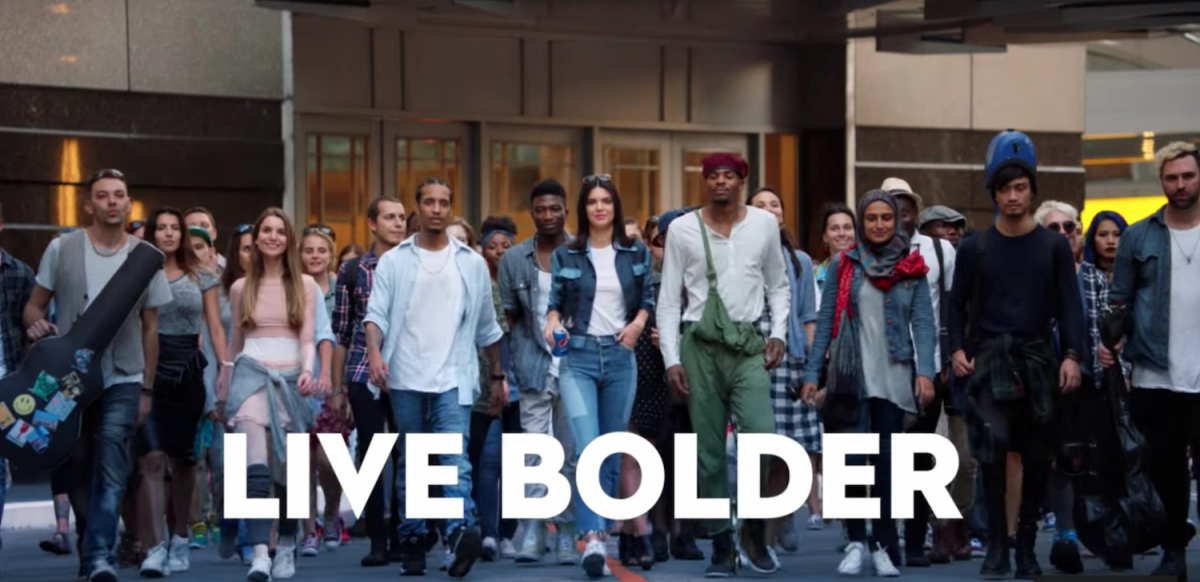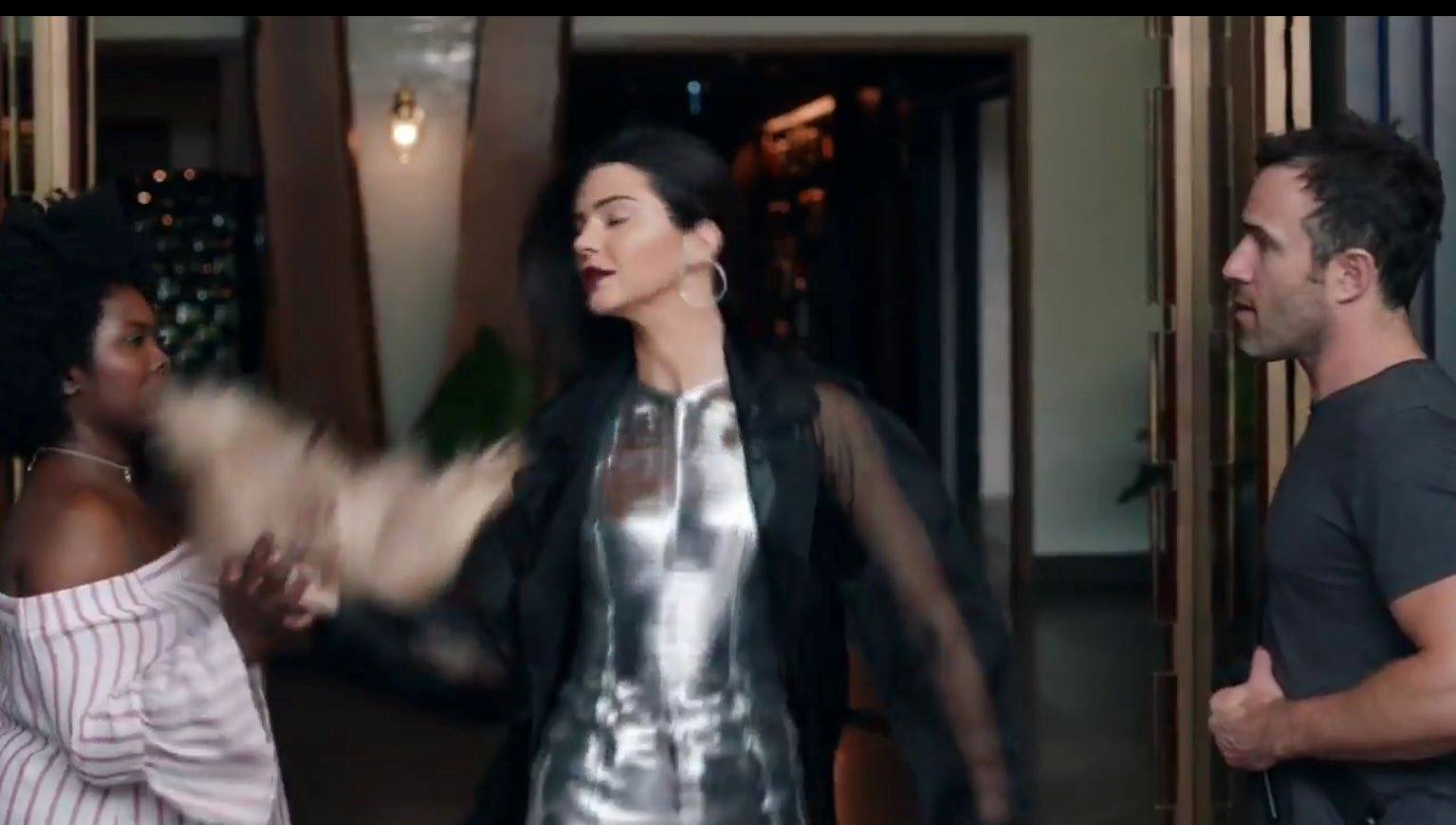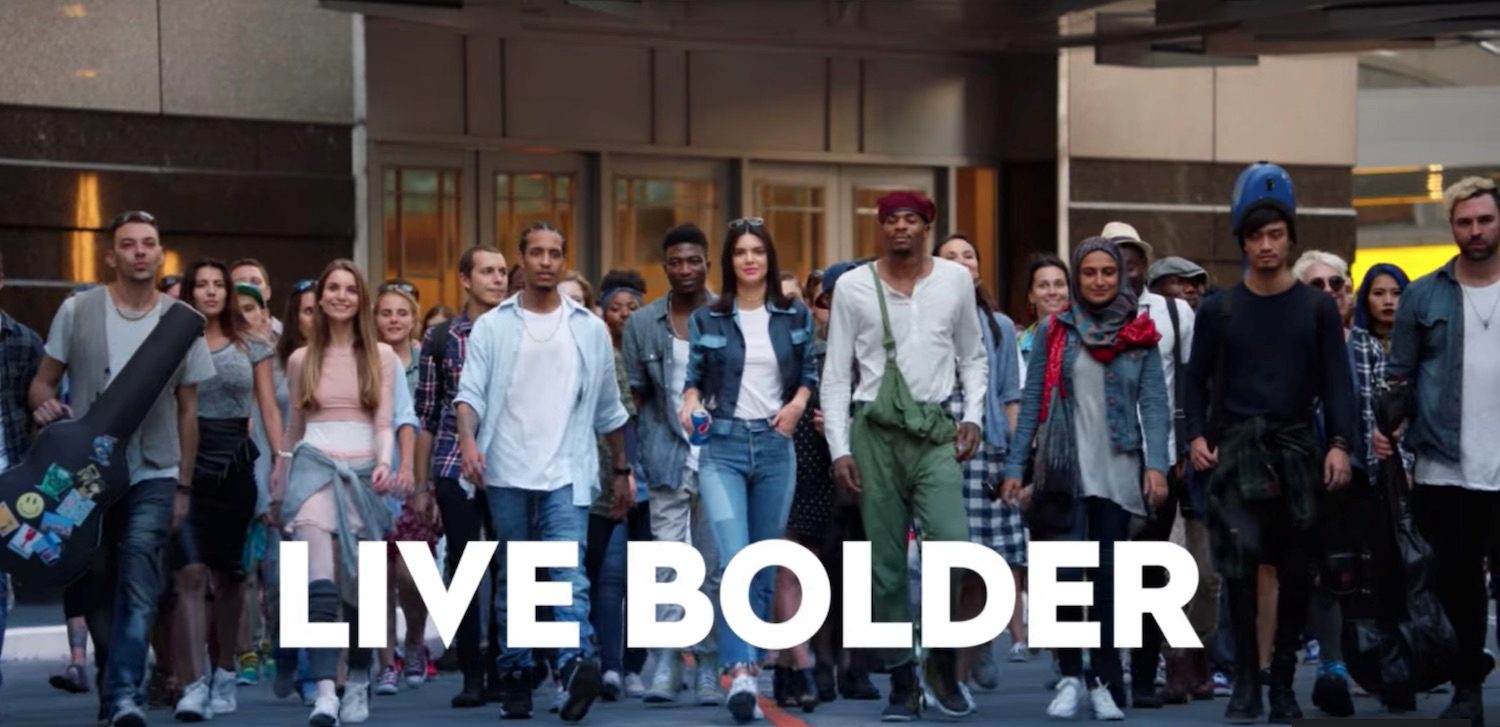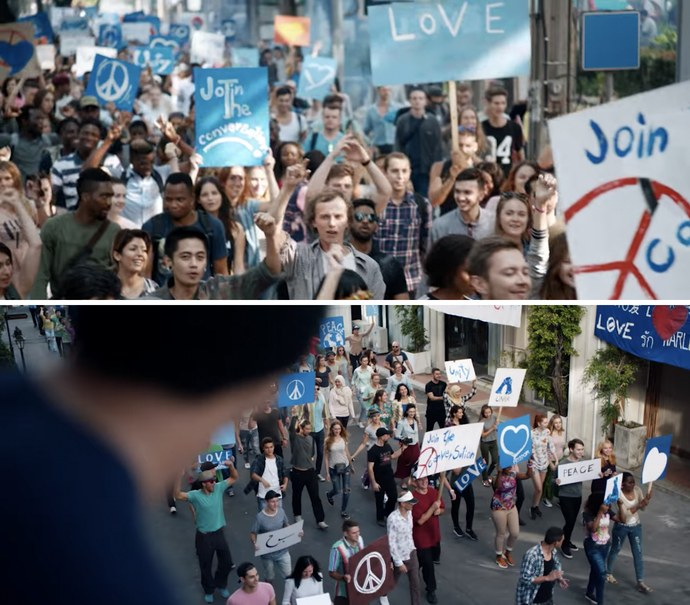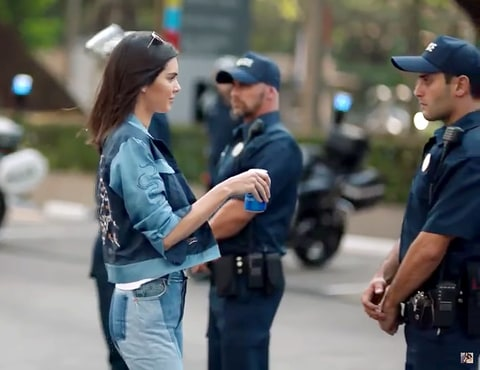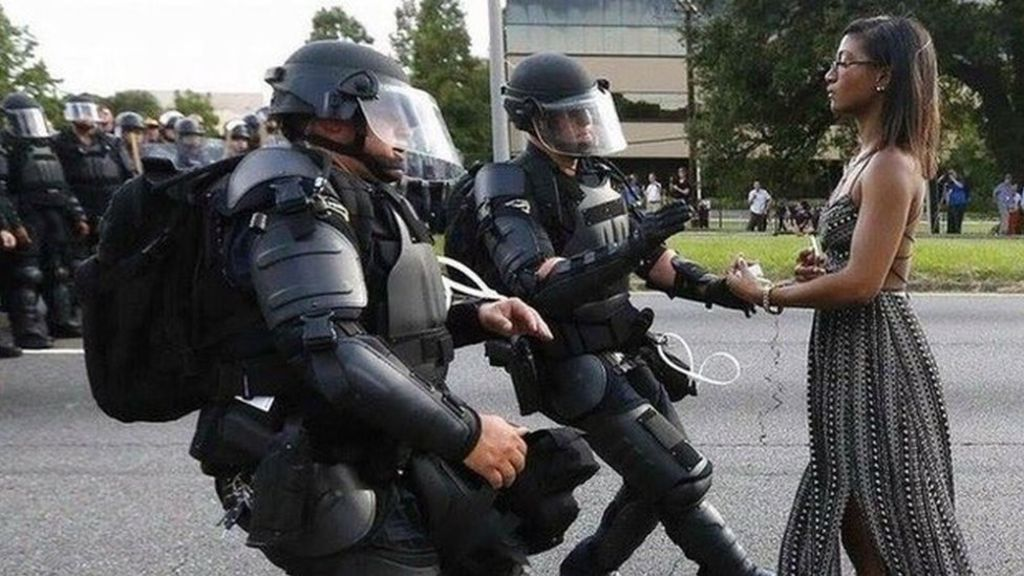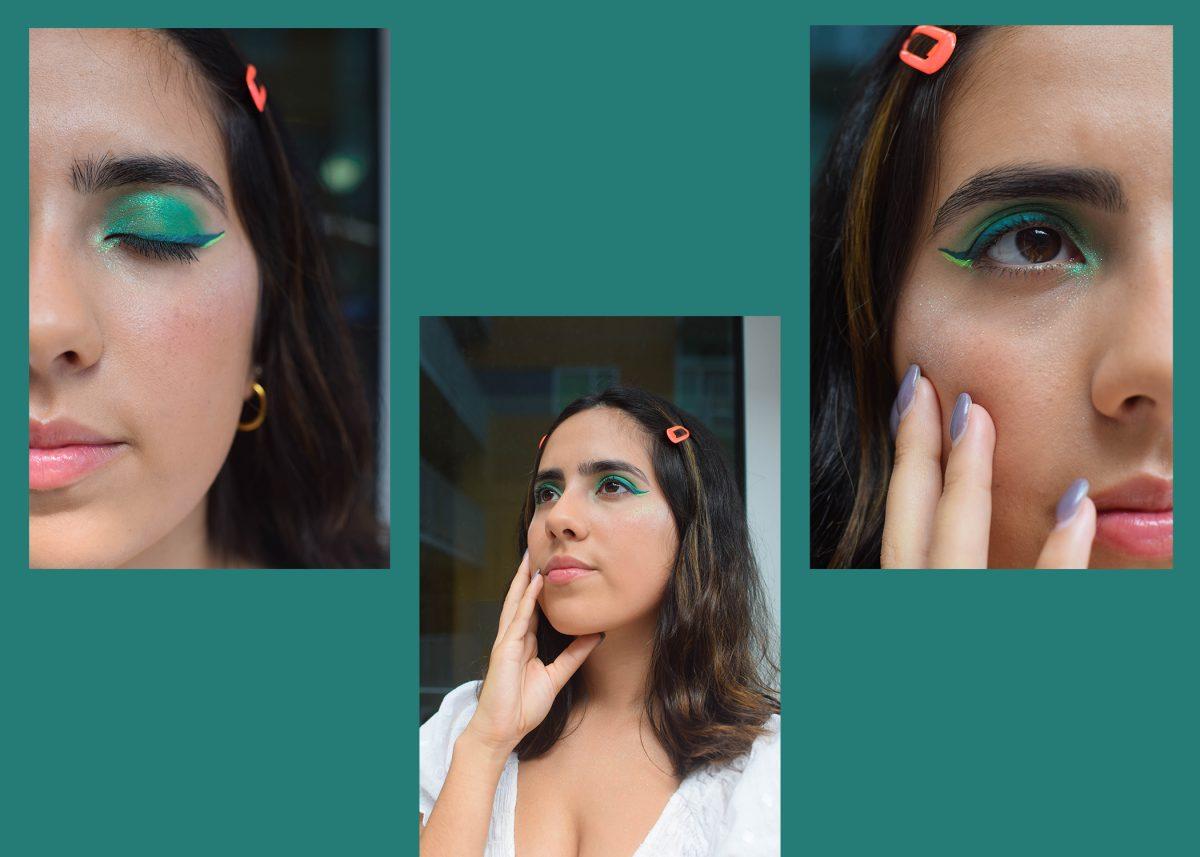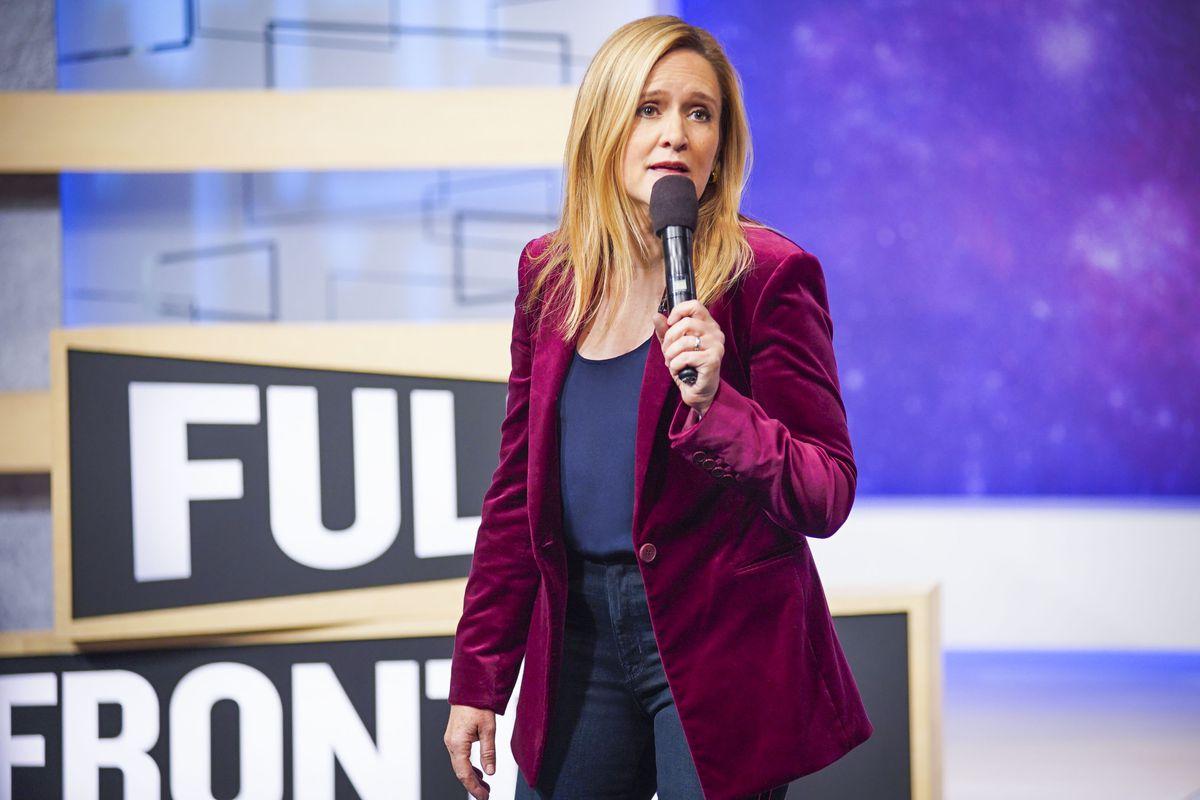In less than 24 hours after it was released, Pepsi’s controversial ad featuring Kendall Jenner was retracted and a public apology was issued. So why did this commercial upset so many people?
Story by Alexis Tatum
In a strange and somewhat magical feat, Pepsi’s latest ad has united the internet in one unified “WTF?” moment. The ad, which features model and reality TV star Kendall Jenner, received nearly immediate backlash in the form of memes, tweets, angry blog posts and more. Here are the highlights of the biggest fails during Pepsi’s short-lived “Live for Now” campaign:
Kendall Jenner as the Face of the Resistance
It’s not very surprising that another Kardashian is being problematic. In the ad, we see Jenner, a privileged white woman, leave her photoshoot (tossing her wig at a solemn-faced black woman in the process) and break through the crowd to give a police officer a can of Pepsi. How heroic! The brave deed is followed by a satisfied sip from the officer and celebration from the crowd of supposed protesters.
Photo courtesy of @MrErnestOwens via Twitter.
According to many critics, the fact that Kendall Jenner was the face of this ad was one of the principal problems. The 21-year-old is not an activist, does not advocate for the disadvantaged and does not seem to voice any public political opinions. Not only did Jenner misrepresent the struggle of real protestors, she got a special apology from Pepsi after the ad bombed.
“Clearly, we missed the mark, and we apologize. We also apologize for putting Kendall Jenner in this position,” the apology posted on Twitter read.
This apology came off as pointless, seeing that Kendall Jenner is a consenting adult who was paid for her participation in the ad. No need to apologize to a willing participant. The message that Pepsi attempted to convey should have included a more politically active and respected celebrity of color– not just a popular, pretty face.
Diverse? Yes. Sensible? No.
Photo courtesy of Pepsi.
Pepsi’s ad was racially diverse, featuring several young and attractive people of multiple ethnic backgrounds. This diversity, however, was not efficient in producing an accurate depiction of a protest climate. The wide range of people made it unclear what was happening and left the police as the only antagonists. The stern, uniformed and menacing police highly contrasted the happy, young protesters, providing a questionably evil depiction of cops.
Is it a Protest or a Party?
Photo courtesy of Vanity Fair.
Speaking of these happy, young protesters, what were they so upbeat about? Marching in a huge crowd bearing signs with empty statements such as “Join the Conversation,” these protestors seemed awfully cheerful. People especially disliked this detail too, insisting that these overjoyed people were making a mockery of serious protests in which people have been arrested, attacked and even killed.
Trivializing Black Lives Matter
Photo courtesy of US Weekly.
Photo courtesy of BBC News.
Perhaps the most disputed conclusion about the Pepsi ad is the accusation that it trivialized the Black Lives Matter movement. Director of Photography Bjorn Charpentier revealed that the protest theme was based on a photo from a protest of the Vietnam War in the 1960’s. However, the similarities between the ad and the Black Lives Matter protests are uncanny and hard to ignore. For example, the act of Jenner handing a Pepsi can to a police officer is vaguely reminiscent of the famous photo of Ieshia Evans, a Black Lives Matter protester in Baton Rouge.
Final Thoughts
Pepsi meant well, so how did this ad go so terribly wrong? The answer is simple: though the ad itself flourished in diversity, the executive decision makers were not diverse at all. Pete Kasko, who served as the creative director and Michael Bernard, the main director are both white men trying to represent movements they, most likely, do not personally identify with. The ad would have probably survived if at least one person of color was present at the drawing board. Hopefully, Pepsi learned its lesson: inclusion and context are important.































